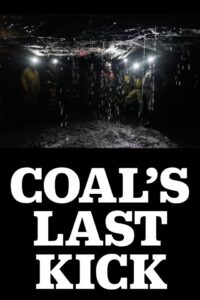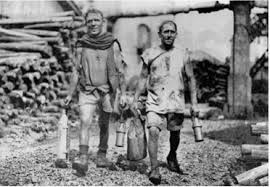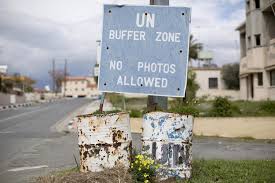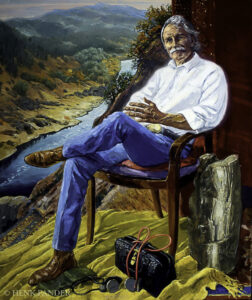
It was late in the day some years ago and we had just driven past the capital of West Virginia, Charleston. The golden capital strikingly stood above the low-level smog which was layered over the city itself. Here we were in the Alleghenies, a 640 kms portion of the Appalachia, a rich source of coal. Here pitched battles were once fought between the miners and the mine owners – called the coal wars. The reason lay in the fact that during this period more miners were killed here in accidents than were lost by the US armed forces in World War 1.
West Virginia had been carved from Virginia in 1863 during the American Civil War, partially because the West Virginians did not follow most of Virginia which seceded at the outbreak of the American Civil War. Yet the electoral base and its Democrat traditions lay in its workers, radical by American unionism standards, reinforced by the memories of the coal wars.
I wondered, as we approached the entrance to this property with its imposing edifice, whether it was a hotel where we could stay for the night. I drove in and the colonnaded entrance suggested that perhaps I had inadvertently driven into a private estate. However, I got out of the car, in jeans and all, and entered the building in all innocence to enquire what was this place.

The man behind the reception desk looked me up and down and said, “Sir, this is The Greenbrier.”
As I learnt very quickly, The Greenbrier was the place where Presidents stayed, and I found out there were references to them as far back as Polk and Tyler. I thought the car parking space for the resident golf professional at the time, Sam Snead, said it all. This was a comfortable Republican enclave in the heart of what was a poverty-stricken mining area. I remembered once, on a flight north in Australia, there was a dishevelled guy sitting next to me. We got talking, although I had difficulty understanding him; he turned out to be a miner going up to the coal mines in Queensland. He was from West Virginia, and his mumbled English was full of archaic constructions and words that meant nothing – it was a dialect probably based on 17th or 18th century English. In the end, in the light aircraft, the noise of the plane made it impossible to talk and we lapsed into silence.
But back to The Greenbrier. The Government had built a huge bunker at the hotel during the height of the Cold War, which had the capacity to house the whole of the Congress in the event of a nuclear attack. The facility had long been decommissioned by the time we had stayed. I believe I was punished for my disrespectful comment as the room assigned was so far from the main building that it almost collided with the fence and was well behind the bunker. Still, they allowed us into the dining room.
However, before that could occur, the reception desk clerk had said, “If you wish to dine in, sir, you will need a jacket.”
“No worries.” I had a jacket – a blazer in fact.
A key was pushed towards me. The Greenbrier had welcomed us, after a fashion. Menofregismo as the Italians would say.
West Virginia has always been reliably Democrat, but now no more. The three Congress members are all Republicans; only one of the two senators is a Democrat and over 50 per cent of the time he voted with or for Trump, even in the impeachment he was only one who crossed over from his Democrats for Trump.
From being reliably Democrat, now West Virginia is almost the most Republican State if judged by the vote for Trump here recently – all changed in a decade! Biden received less than 30 per cent.

The use of coal is rapidly dying, so it would be a useful exercise for the Biden Government to determine how to restructure the West Virginian economy to phase out coal. It is more difficult than just bribing the mine owners to provide the semblance of work by keeping uneconomic mines open. However, it probably would be just as cheap for the Government to bypass the owners and pay the miners a living wage disguised as a redundancy package or employ them to resuscitate the once pristine landscape mined over the past 150 years.
After all, the wealthy and influential were prepared to invest in an opulent playground here, including the Congress shelter bunker. Notwithstanding that it had been decommissioned well before we stayed, here was further evidence of the very essence of privilege in one of the poorest parts of the country.
The latter part of the last century and into this, first as governor and then as Senator, Jay Rockefeller, the great-grandson of John D Rockefeller, as a Democrat (unusual because the rest of the family were solidly Republican) won most of his elections by huge margins. There is little doubt that during his long association with West Virginia he and the coal industry were on very good terms – for most of the time. However, towards his retirement, he began to realise the impact of coal on climate. Two years before his retirement, in 2012, he made in the following statement:
Scare tactics are a cynical waste of time, money and worst of all coal miners’ hopes. But sadly, these coal operators have closed themselves off from any other opposing voices and few dared to speak out for change – even though it’s been staring them in the face for years.
This reminds me of the auto industry, which also resisted change for decades. Coal operators should learn from both the mistakes and recent success of the auto industry. I passionately believe coal miners deserve better than they are getting from operators and West Virginia certainly deserves better too.
Here in Australia the problem is that fear has gripped Joel Fitzgibbon, not any constructive thought. His livelihood lounging on the plush red seats of Parliament House is threatened. Forget about climate, but then there are unions agitating for retention of coal mining, and the power of the unions depends on these miners coughing up subscriptions – but for what? As with the car industry, government subsidy for the uneconomic only ends up improving the bottom line of the big foreign-owned companies.
The slick Monsieur Perrottet wants to restore his stained escutcheon by expanding the coal industry in NSW to pay off a short-term debt and in so doing leaving an incalculable environmental debt for generations of Australians; the feathery Premier just keeps talking to see if she can break the world record for not taking a breath. There is some in government with a contrary idea of how to lessen the coal dependency, despite export prices for both coking and thermal coal are being maintained.
Yet there is fear of divesting away from coal. This has been aggravated by the electoral results in Queensland, and by the “near-death experience” of Fitzgibbon in his seat of Hunter. The other NSW coal seats did not seem to mirror the same extreme behaviour.
There is another problem, and that is the Fly-in-Fly-Out miners. This expanding cohort should not be confused in the arguments over the hearts and minds of the local coal miners.
As one local Mount Isa correspondent has written:
The issue of Fly In Fly Out did not get much of a look-in in the federal election, perhaps because it is mainly seen as a state issue.
FIFO is convenient for workers who want to live by the coast but still enjoy high-paid jobs in remote locations.
It is also convenient for companies who have better control over their staff and their movements whether it be on chartered flights, mining camps or buses.
But it is a terrible deal for places like Mount Isa and the towns of North West Queensland which get all of the downsides of a large mining operation on their doorstep but few of the benefits.
Yes I understand that airports, motels, pubs and clubs, and the like do well out of a transient workforce but other businesses not so well.
The wear and tear of mining operations on roads and other facilities is a cost borne by those communities. And only this morning did I hear a speaker at a MineX breakfast talk about the need for a local work force because without that “we have no social licence to operate”.
The Queensland government recognised the issue with the Strong and Sustainable Resource Communities Act introduced last year to ban 100% FIFO mining near towns like Mount Isa and Cloncurry.
However, companies can get around this simply by posting one staff member locally which meets the wording of the act but not the intent.”

Great is it not; with one selfish self-centred politician intent on contaminating the narrative of moving away from coal. A leader, if one can term Albanese that, should have called him out immediately. Or do I do Mr Albanese a disservice. Maybe he really wants to see the Balmain coal mines re-opened in his electorate. Fitzgibbon can’t have it all his own way. After all, my late neighbour used to tell me that, as a boy, he would go around the corner to the coal dump and bring coal home for the stove and the fire. It was said that Balmain was then quite a sooty turn to behold.
As a 40-year resident, I remember seeing the entrance to the mine. After all, to that smooth genius, Monsieur Perrottet, reopening the mine shafts under the Harbour would bring lots of “coal hard cash” and so convenient – or not. And what a jape – reopening a coal mine in a Green electorate. Problem is that is where Perrottet and his fellow travellers want to scar Australia, the wildlife do not vote. However, in Balmain, I am assured that Monsieur would find a different form of wildlife – one that rumbles around the suburb in their Land Cruisers looking for anybody with a lump coal in their political pocket. After all, Monsieur wants to demolish the White Bay Power Station – perhaps a new location for an underground coal mine.
But I stray from my West Virginian narrative – at least I have a narrative.
While America looks away.
I was rummaging through my old magazines and I came across a copy of a Harper’s dated August 1999, in which there is an article where two journalists were assigned to report on Cyprus – flipping a coin to determine which of them travelled to the Turkish Republic of Northern Cyprus and the other to the Republic of Cyprus. As the lead-in to that article, it was stated; “Cyprus remains partitioned, a case study in how ethnic hatred perpetuates itself but perhaps also a manual on how peace can be sustained in places like Kosovo”.
It was nearly 20 years later that my friend and I walked across the Green Zone that separated the two sides of the divided Nicosia, the major city of Cyprus.

There is something strange walking across what is essentially the line where battle formally ended. A few peacekeepers wearing blue berets are moving around inside the buildings and the only sound is a radio blaring out modern pop. There is nobody to block our crossing through the rubble strewn street, only a strange sense of abandonment, although you know eyes are watching you in the CCTV cameras slung along your pathway. Passing from one side to the other met with little interference from the Cypriot or Turkish side.
Once we were across then there was the question of transport. We did not have to wait long before a taxi pulled up and took us to Kyrenia, a seaside town on the Turkish side where we had a pleasant seafood lunch. The taxi driver said he would return, and he did, punctually. The only noticeable difference from one side to the other was the appearance of mosques; the cars still drive on the left, irrespective of which side of the green lines one drives.
Cyprus is the only place outside the British Isles and the Republic of Ireland in Europe where there is a remnant link to the previous British occupation – driving on the left hand side of the road.
In 1878 Cyprus entered the British Empire under rather unusual circumstances. The Ottoman Empire had just been at war with Russia and were very much in danger of losing control of their capital Constantinople. The British intervened in the crisis on the side of the Ottoman Turks by sending a fleet to intimidate the Russians. The Ottoman Sultan was so thankful for the British intervention that he granted the control of the island of Cyprus to Queen Victoria. This lasted until 1960 when independence was gained. Throughout the 1950s a Greek terrorist group EOKA, under a former Nazi collaborator George Grivas, exacted a price on British occupation, a killing spree of British soldiers and Turkish Cypriots in the main.
The British still retain armed forces bases there on territory that was ceded to the United Kingdom on independence. That means that slivers of Cyprus remain British soil.
While there was a myth abroad that the Turkish and Greek Cypriot relations had been harmonious before the invasion but after Independence, that was far from the truth. The Green Zone actually began a line drawn by the British in 1963 because of strife between the two.
By 1974, the treatment of the Turkish Cypriots was bad enough for Turkey to intervene, and it did not take that long for the Greek Cypriots to quickly sue for peace. This led to fragmented jurisdictions, separated by a UN peace force which have, since the ceasefire, patrolled the Green Zone that extends across the island, cutting through Nicosia as mentioned above.
There the line has remained intact despite regular exchange of obscenities, rock throwing, and the more serious “cocking and pointing”.
When the Harper’s article was written there was very limited access across the border. The two journalists met once, face to face, for coffee in Pyla, a small fishing village within the Green Zone.
There may have been calm when we visited, but there was residual bitterness. We were there at a time before Erdogan came on the scene with all his populist fury. However, he probably recognises what one Greek Cypriot soldier said when asked whether he would retaliate: “No,” he said smiling, “We are careful not to provoke them, because we are the weaker side.”
Erdogan must know that and after the defeat of Armenia recently, he may be tempted to have a “go” at Cyprus.
Apart from the increased access across the Green Zone, since the 1999 Harper’s article was written, another phenomenon has occurred. It was first evident when I picked up the menu at the hotel in Limassol where we were staying. The menu was not only in Greek and English but also in Russian. The Russians have made a large investment in Cyprus – either with or without Putin’s collusion. Who would know the extent of each?
Now there is a cohort of Russians who have not only invested in property but also have bought Cyprus passports, a practice contrary to EU rules. Under pressure from the EU, Cyprus has now withdrawn that permission to buy into the Republic. Unlike Armenia, Cyprus is a member of the EU, but the Russian passports have not been cancelled.
However, would that matter given that America is now distracted and if the Turkish Cypriot grievances are inflamed by Erdogan, how would the Republic respond? Seek Greek support? It was not there in 1974. Would it be now?
The European Union? Does the EU want to go to war with Turkey, a member of NATO? After all, it was NATO bombing of Serbian held positions and a USA-brokered peace which, in the 1990s, ended that perennial obsession of the Serbs to dominate the Balkans.
This is different political chemistry, and one without a strong America, with a lame-duck President with Russian connections still at the helm. Cyprus has inhospitable mountainous areas. Don’t we know it? We got lost in the wilds of Cyprus, and only worked our way out by pointing the car down the mountains, but at least there was a track to follow.
So military conquest of Cyprus is not just a case of rolling up to seaside resorts like Limassol and Paphos in Turkish tanks. The mountains are perfect for guerrilla warfare.
So-called Russian peacekeepers could already be there to help – and themselves – as they have done in Armenia. They might be there to welcome the invading Turks.
As for the sovereign British bases, maybe Boris would let the Russians have them. After all, he could say it is part of his Brexit plan. Hopefully no one would write, as Queen Mary did with “Calais”, that Cyprus will be written on his heart.
Nevertheless, it should not be ignored that the Russians doing the Trump
Presidency have built up a seasoned defence force, which has honed its skills in Syria and elsewhere. Why not Cyprus? Why not indeed!
John Kitzhaber continues his analysis of the US health system…

Public Resources
We need to understand the central role of public dollars in our healthcare system. Healthcare is the only economic sector that produces goods and services which none of its customers can afford. This system only works because the cost of medical care for individuals is heavily subsidized with public resources. This happens directly through public programs like Medicare and Medicaid. It also happens indirectly through the tax exclusion for employer-sponsored health insurance and through the public subsidies in the individual insurance market established through the Affordable Care Act (ACA).
As a result, about 90 percent of Americans depend on public subsidies to help them cover the cost of their care—all except the 28 million Americans who remain uninsured. These people are not eligible for a public subsidy themselves, but through their taxes they help subsidize the cost of healthcare for everyone else. This egregious situation reflects the systemic inequality that exists not only in our healthcare system but also across our whole society.
Thus, the central issue in the healthcare debate involves the allocation of public resources, which represent a kind of fiscal commons. They are shared resources raised from society as a whole—and they should be allocated in a way that benefits all of us, not just some of us.
The National Debt
We also need to recognize that our healthcare system is increasingly financed with debt. Why? Because public resources are finite and Congress is borrowing ever more money to pay for existing programs and services—including health care. This fact is reflected in the congressional budget deficit and in our national debt. The national debt is the accumulation of years of budget deficits and represents the amount of money that has been borrowed to cover the difference between congressional spending and the tax revenue available to pay for it. Since healthcare now accounts for over 28 percent of the federal budget not spent on interest—and is projected to grow to 33 percent by 2028—it has become a major driver of the national debt.
This means that as the population ages and the cost of care continues to rise, the economic viability of the healthcare system will increasingly depend on borrowing money—and on the capacity of the federal government to absorb more debt. If the capacity to borrow is constrained, the financial underpinnings of the healthcare system begin to unravel. Since COVID-19 has created exactly this constraint on borrowing, a healthcare financing crisis that was on the horizon is now at our door.
Income Inequality
Furthermore, a growing share of the money borrowed to prop up our medical system is not being used to expand coverage. Instead, it is enriching the profits of large corporations and wealthy individuals. Let me be very clear: our current healthcare system is increasing income inequality through a process called rent seeking. This occurs when powerful stakeholders manipulate public policy to increase their own wealth without the creation of new wealth (i.e. they take more of the pie without making the pie bigger). For example, when the pharmaceutical industry convinced Congress to prohibit the government from negotiating drug prices for the 60 million Americans on Medicare, it distorted the market by putting the power in the sellers’ hands to set whatever prices they wish. After many news stories about “big pharma”, more people have become aware of concerns with drug prices. What seems to be less well known is just how profitable medical insurance is: in 2019, the seven largest for-profit insurers had combined revenue of over $900 billion and profits of $35.6 billion, a 66 percent increase over 2018.The result of the rent seeking that is evident throughout the health care industry is lower disposable income for the individuals who have to pay those inflated prices, increased profits for the companies, and wider income inequality.
Health versus Health Care
Finally, we need to recognize that the goal of the healthcare system should be to keep people healthy, not just to finance medical care. In other words, it needs to address the social determinants of health—access to healthy food and clean water, safe housing, a reliable living wage, family and community stability, and more—which have a far greater impact than medical care on the health of both individuals and communities. Yet the ever-increasing cost of care compromises our ability to invest in these things.
Today, healthcare providers and the system have different goals. While most care providers are trying to enhance people’s health, they nevertheless work in a system where the incentives are to increase profits and redistribute more wealth to the wealthy.
Confronting the Total Cost of Care
Improving health requires a financially sustainable system that ensures that all Americans have timely access to effective medical care
and
that makes long-term investments in the social determinants of health. To achieve these dual goals requires five core elements:
- Universal coverage;
- A defined set of benefits;
- A delivery system that assumes risk and accountability for quality and outcomes;
- A global budget indexed to a sustainable rate of growth; and
- A cost prevention strategy that allocates some of the savings to addressing the social determinants of health. A system that incorporates these elements can take many forms, but without all five we cannot achieve our goal of improving health in a financially sustainable way.
There are two primary obstacles keeping us from moving toward a new system focused on value and health: the way the debate has been framed, and the cost-shifting strategies that—until the pandemic—allowed us to avoid the growing discrepancy between the cost of the system and our ability to pay for it.
How the Debate Is Framed
For decades, the national healthcare debate has been paralysed largely because neither Democrats nor Republicans have seriously challenged the underlying healthcare business model—the debate has been over what level of funding to provide. The current business model is built around fee-for-service reimbursement. The more they do, the more they get paid. Since the fees paid for medical services usually are not linked in a meaningful way to a positive health outcome for the person receiving the care, the system incentives are aligned with maximizing revenue rather than maximizing health.
The Affordable Care Act (ACA) attempted to move away from this model with incentives to participate in accountable care organizations (ACOs), which are networks of providers that shared in savings if they delivered care more efficiently (called upside risk). The problem is that the ACOs were not required to assume any significant degree of downside risk, in which they had to refund a payer if the actual costs of care exceeded a financial benchmark. Furthermore, the ACA did not take on the rent seeking (transferring wealth to the wealthy) that accounts for so much of the cost in the system. As a consequence, the cost of health care grew from $2.6 trillion in 2010 to $3.6 trillion in 2019.
In the wake of the ACA, both major political parties have continued to debate only the extent to which we should fund the system, creating a false choice between cost and access. This false choice is reflected in the Republican view that the cost of health care is unsustainable and must be constrained, and in the Democrat view that any reduction in spending will reduce access. Both sides are right, if they remain wedded to the current business model.
Republican proposals to “repeal and replace” the ACA would simply reduce the public subsidies in the current business model, increasing the number of uninsured Americans and exacerbating the inequity that already exists. Democrat efforts to expand coverage through proposals like “Medicare for All” would significantly increase public subsidies but within the same inflationary fee-for-service business model, adding to the burden of debt that future generations will have to pay. To put it another way, Republican proposals increase inequity and harm people today; Democrat proposals increase the debt and harm people tomorrow.
Cost-Shifting Strategies
Framing the debate in this way allows legislative bodies to avoid directly addressing the cost of care by simply shifting that cost somewhere else, a strategy used by other third-party payers (insurance companies and employers). As the total cost of care increases, instead of seeking to reduce it, these payers take actions that shift the cost to individuals, who cannot afford it, or to future generations. Here are the most common cost-shifting strategies:
- Reducing eligibility, cutting benefits, and/or raising co-payments and deductibles—all of which shift costs to individuals;
- Reducing provider reimbursement, which may result in efforts by providers to avoid caring for those who cannot pay and/or lead to increased fees by providers when they are caring for people who are insured; and
- Increasing debt-financed public subsidies, which shifts the burden to our children and grandchildren.
Importantly, none of these cost-shifting strategies reduce the total cost of care, which is the central structural problem in our system. Before COVID-19, we were able to rely on these strategies, particularly debt-financed public subsidies, to avoid the difficult choices necessary for a solution. But given the economic crisis we face now, we must directly confront the total cost of care. Fortunately, this gives us the opportunity to pursue new strategies that both redesign the current hyperinflationary business model and invest in those things that have the greatest impact on health and well-being.
To be concluded
Mouse Whisper
Out of an abundance of caution
ex abundanti cautela
In law, describes someone taking precautions against a very remote contingency. “One might wear a belt in addition to braces ex abundanti cautela”. In banking, a loan in which the collateral is more than the loan itself. Also, the basis for the term “an abundance of caution” employed by United States President Barack Obama to explain why the Chief Justice of the US Supreme Court John Roberts had to re-administer the Presidential oath of office, and again in reference to terrorist threats.
In reference to Chief Justice Roberts, who flubbed it the first time, Obama recognised the deep conspiracy and made him do it again – correctly. Our authority is the impeccable, Il pagliacco Guiliani.
Just a quote dripping with irony, it has become the favourite phrase of the month, and it seems that is how one formally approaches the Virus, but you must be in full evening dress with all medals displayed (sic).
For we mice it is more that we’re “Out of our barn dance our Cat’s in”.

